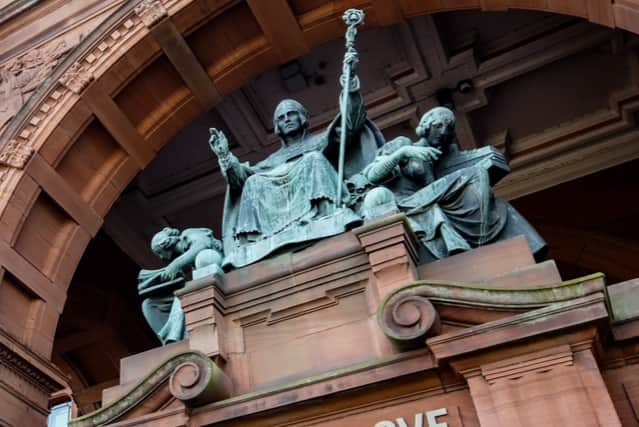Saint Mungo’s Day: Who was St Mungo, why is he the patron saint of Glasgow, what did he do?
and live on Freeview channel 276
Quite simply, St Mungo is the patron saint and the founder of Glasgow.
But why do we celebrate St Mungo? What’s his story, what impact did he have on Glasgow and why he is also known as St Kenitgern?
Early life
Advertisement
Advertisement
He was born in Fife in 528 and named Kentigern, meaning ‘big chief’, and had a troubled start to life. His mother was Princess Thenog, and his grandfather Loth, king of the Votadini or Gododdin.


She was kicked out of the kingdom after she fell pregnant following an encounter with her cousin, king Owain of North Rheged.
It is said her father tied her to a chariot and sent it flying off Trapain Law - but she survived. Her dad had a change of heart and decided she was a witch instead. She was sent up the Forth on a boat with no oars.
Kentigern and his mother were saved by St Serf at a monastery at Culross. He looked after them and named the boy Mungo, meaning ‘dear one’.
What’s his relationship with Glasgow?
Advertisement
Advertisement
At 25, Mungo headed west and began missionary work along the Clyde.
It is said he visited the home of a dying holy man named Fergus, who died the night he arrived. Mungo placed the body in a cart and commanded two bulls to pull it to a place ordained by God.
This spot would become Glasgow.
He built his church where the river and the Molendinar Burn merge - at a site which later became Glasgow Cathedral.
He was exiled in 565 when the pagan king, Morken of Strathclyde, conquered the area.
Advertisement
Advertisement
Mungo visited Cumbria, Wales and then headed to Rome. His exile, though, would not last long. Rhydderch Hael of Strathclyde overthrew Morken and invited Mungo to return and become Bishop of Strathclyde.
His church became a community that was known as ‘Eglais-Cu’ or ‘dear family’ - later recognised as Glasgow.
He died in 614, and was buried near the church.
How did he become a saint?
Bishop Jocelyn (1174-1199) commissioned a book to promote Mungo as a saint. The Vita Kentigerni had to show that he had performed miracles in his life.
Several have been passed down ever since.
Here Is The Bird That Never Flew - about a Robin tamed by St Serf. It was accidentally killed by students who then blamed it on Mungo. He took the dead bird in his hands and prayed, bringing it back to life.
Advertisement
Advertisement
Here Is The Tree That Never Grew - about a holy fire put out by jealous students. Mungo, who was supposed to have been looking after the fire, found some frozen branches and prayed, causing them to burst into flames.
Here Is The Bell That Never Rang - about a bell that Mungo brought back from Rome. The handbell, supposedly given to him by the Pope, has become a Glasgow symbol.
Here Is The Fish That Never Swam - The King of Strathclyde gave his wife a ring, who then gave it to a knight. He knight lost it, and when the king demanded to see his wife’s ring, he threatened to kill her unless she showed it. The knight told Mungo, who asked a monk to catch a fish. Mungo cut the fish open and found the ring.
How do we remember St Mungo?
The Glasgow coat of arms has the bird, tree, bell and fish. You might have also seen the huge mural on High Street depicting a modern-day version of St Mungo with the robin.
His four stories also make up the coat of arms of the University of Glasgow.
